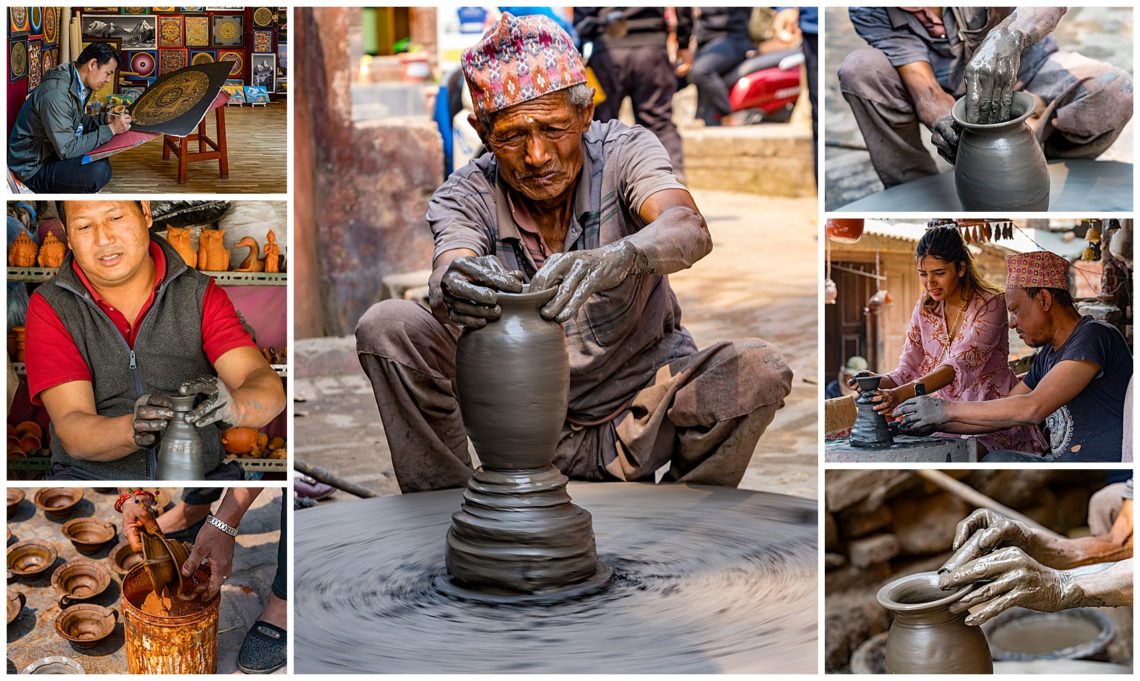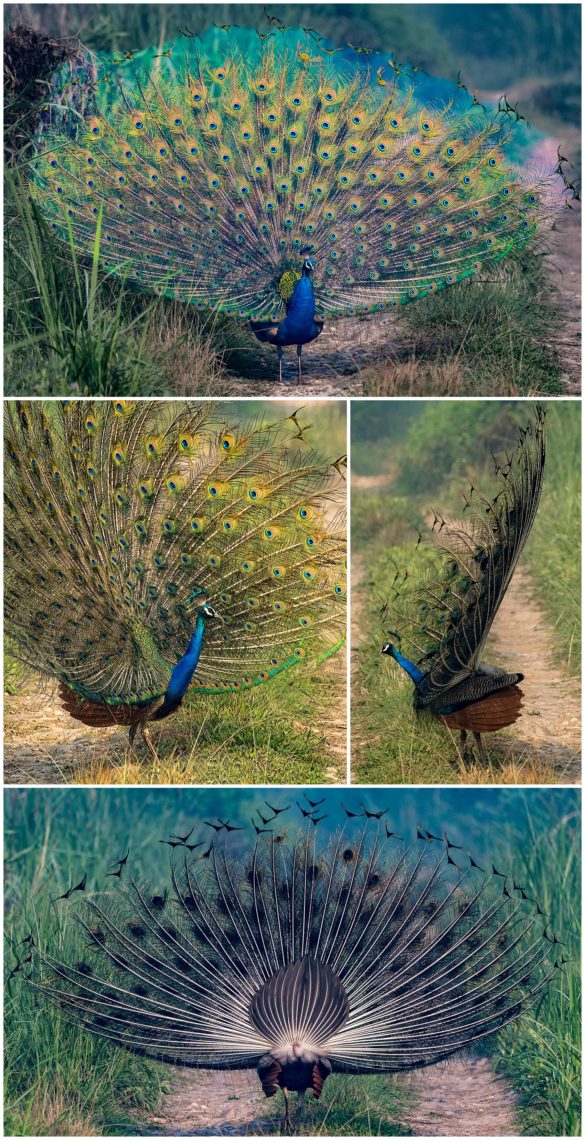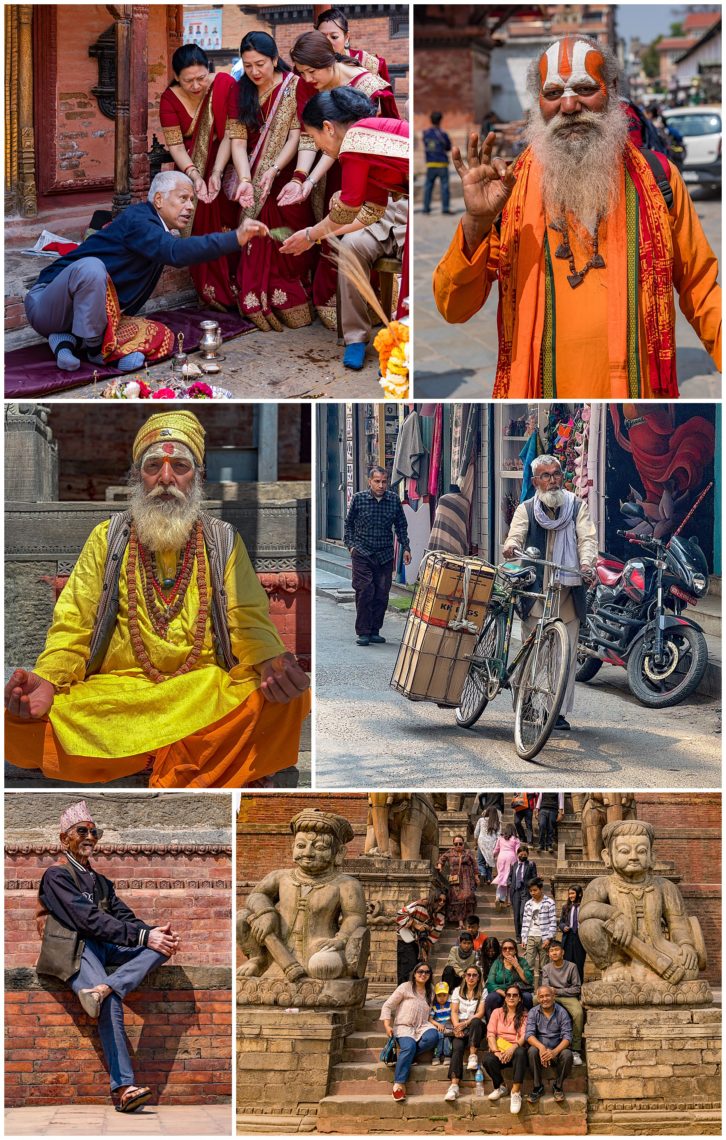
After touring India, we looked at options to explore other countries in this region. We decided to explore Nepal, which was less than 2 hours away by air, direct from New Dehli to Katmandu, and the gateway to Bhutan. Our good friend Judy had spent a month in Katmandu decades ago and raved about her $1/night hotel with view of the Himalayas, so this country has been on our list to tour. Nepal borders India and Tibet, China, as well as also touching borders of both Bhutan and Bangladesh. It has diverse geography with 8 of the 10 highest peaks in the world. It was also where Gautama Buddha, founder of Buddhism, was born, and where Hinduism was founded, which is the predominant religion.
Just outside of Katmandu is a UNESCO site, Bhaktapur UNESCO Heritage Square where Bhaktapur Durbar Square (a former royal palace), Pottery Square, Nyatapola Temple are located (photo block above). We were able to enjoy watching the Newari artisans at work making their pottery right on the street. This city is a living museum known for their ornate wood carvings on architectural structures, wood sculptures, carved wood furniture. Many structures had scaffolding surrounding it, as Katmandu is still recovering from the 2015 earthquake, which measured 7.8, resulting in 9000 deaths and 600,000 structures either damaged or destroyed.

Chitwan National Park was established in 1973 as Nepal’s first National Park and is designated a UNESCO site. It is home to one of the last populations of single-horned Asiatic rhinoceros and also one of the last refuges of the Bengal Tiger. The Big 6 that live in the park include the Bengal Tiger (population 128), one-horned rhino, leopard, sloth bear (upper-right and lower-right), gaur, and wild elephant. We could only check off three out of six, as it’s very rare to see tigers and leopards. We saw the rhinos from quite a distance, as tours cannot go off road.

We were captivated by the courtship dancing peacocks at this park during mating season which occur around April-May. The male raises its tail train, then performs a circular dance to attract females. The females chooses her mate based on the display of eyespots developed to impress them. Only males are called peacocks, while females are called peahens. The peacock feather is a symbol of rebirth and hope, so if you see one on your path, it is considered good luck. Of note, the national animal in Nepal is the cow, and the national bird is a pheasant, the Himalaya Monal, not the peacock.

We crossed the river in Chitwan National Park in boats to load onto safari jeeps. We also saw a small enclosure with fresh water gharial crocodiles , a critically endangered species, which are the nearest relatives of dinosaurs that existed 65 million years ago.

There are seven groups of UNESCO World Heritage monuments and monuments located in Katmandu Valley. Included are Katmandu Durbar Square, Patan, Swayambhunath Stupa (aka Monkey Temple). Of note, we found Katmandu to be cleaner and less crowded compared to what we experienced in India.

Again, we appreciated seeing the women who were dressed in colorful outfits.
The video shows various short scenes we experienced in Katmandu Valley, including watching potters, local parades, and temples. Moving images help us relive our experience more so than still photos.
